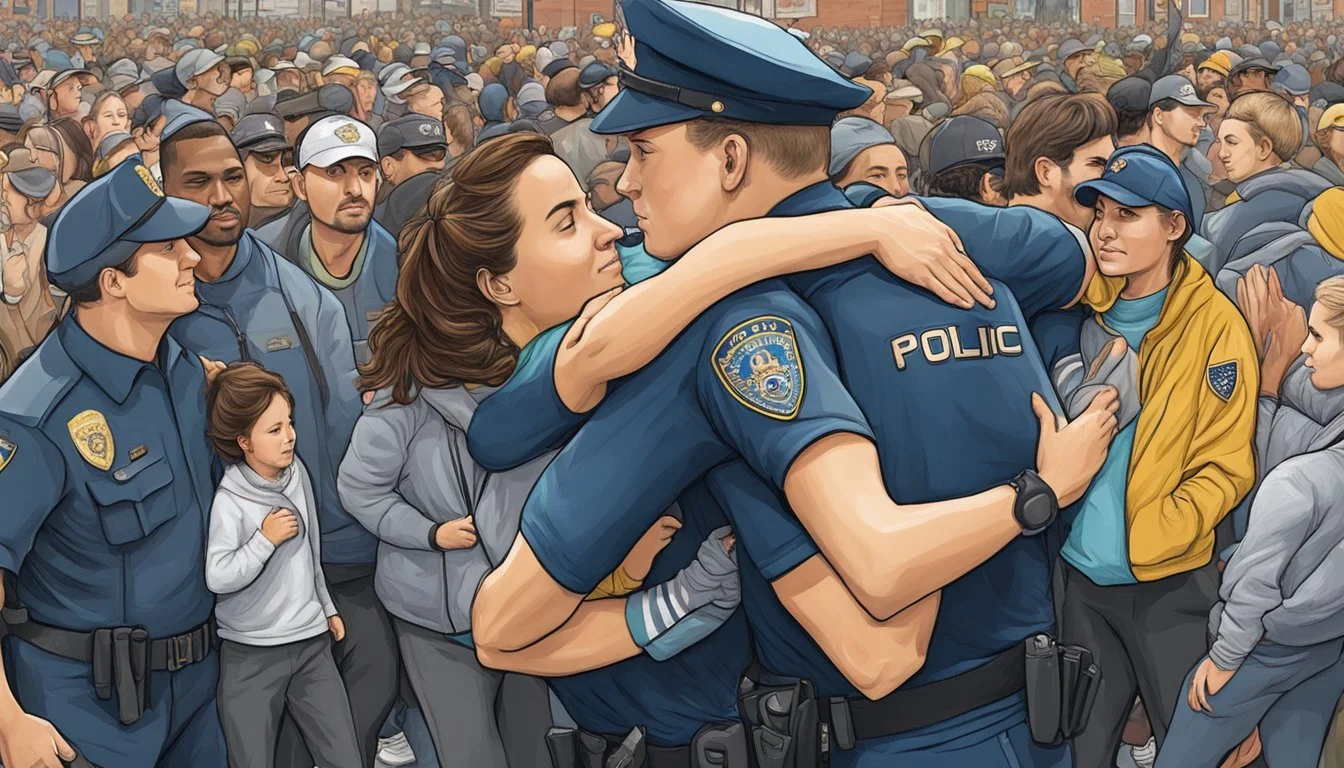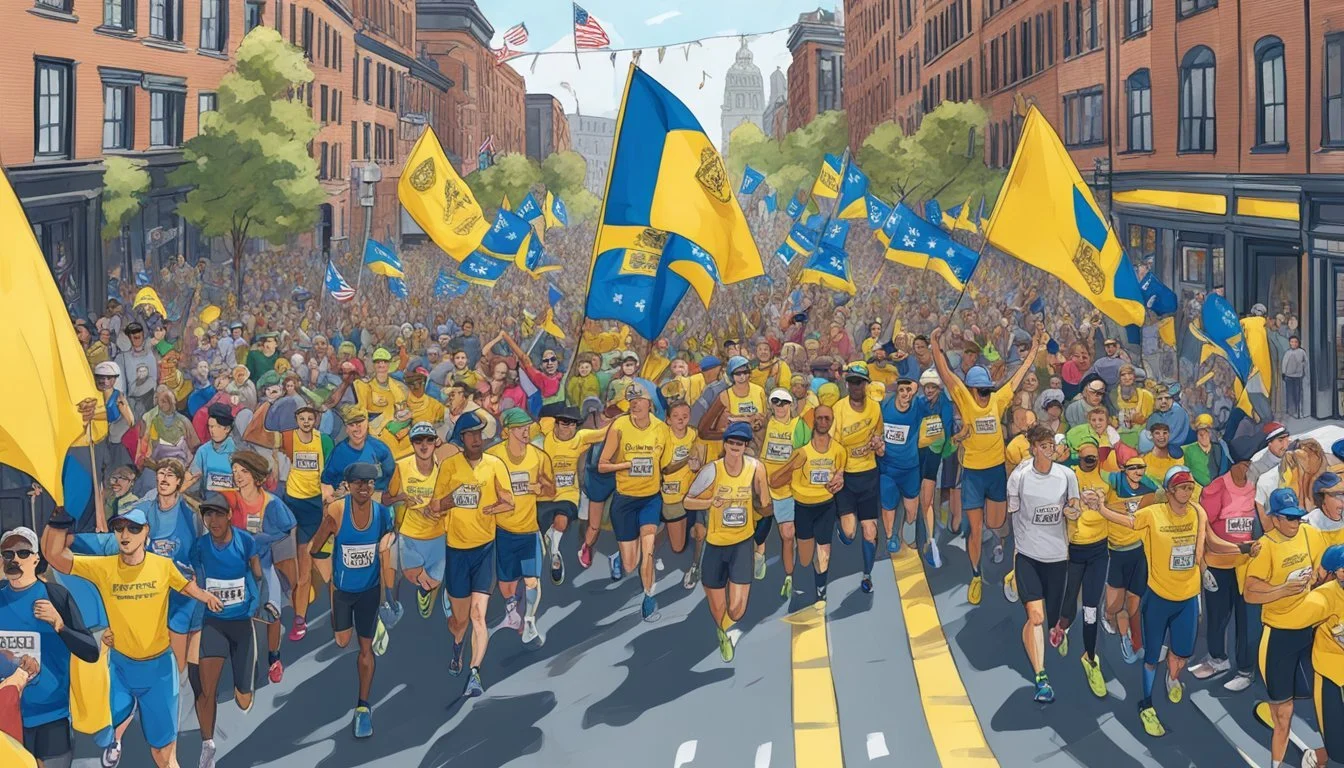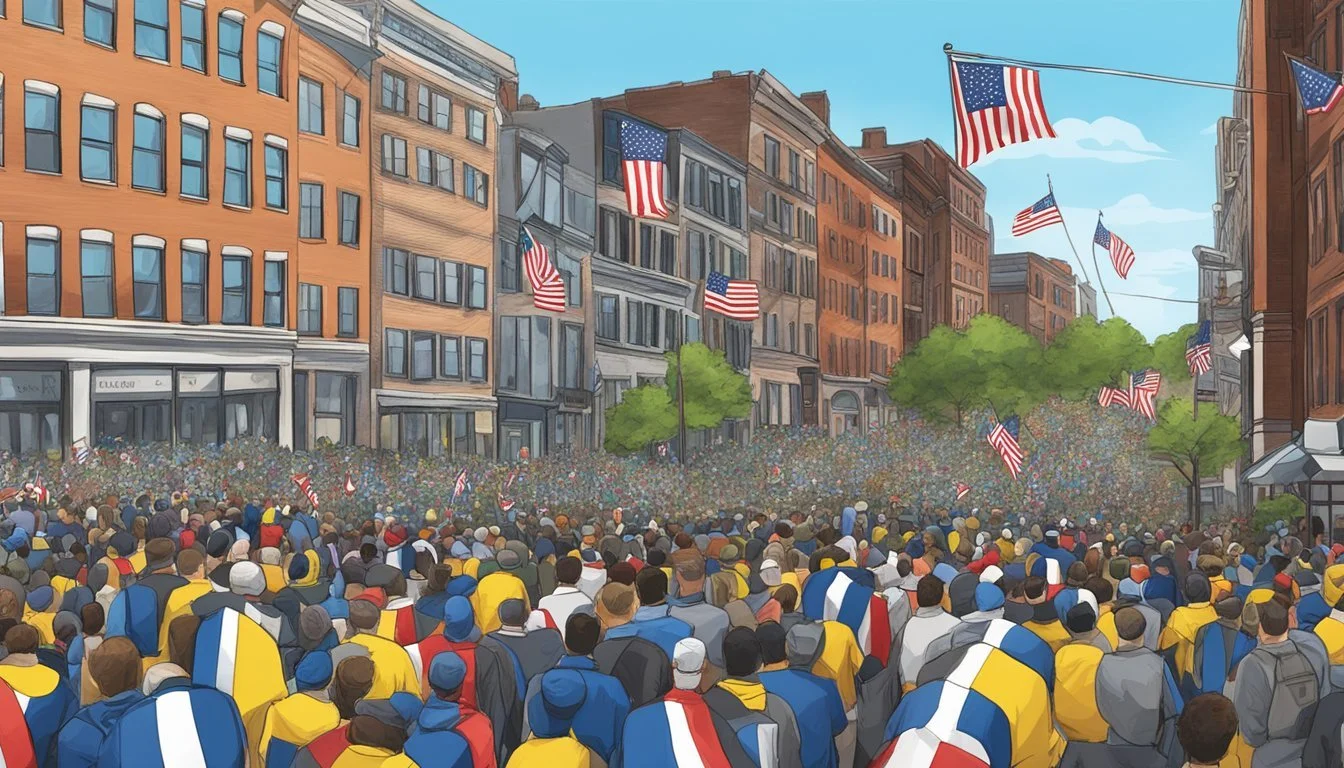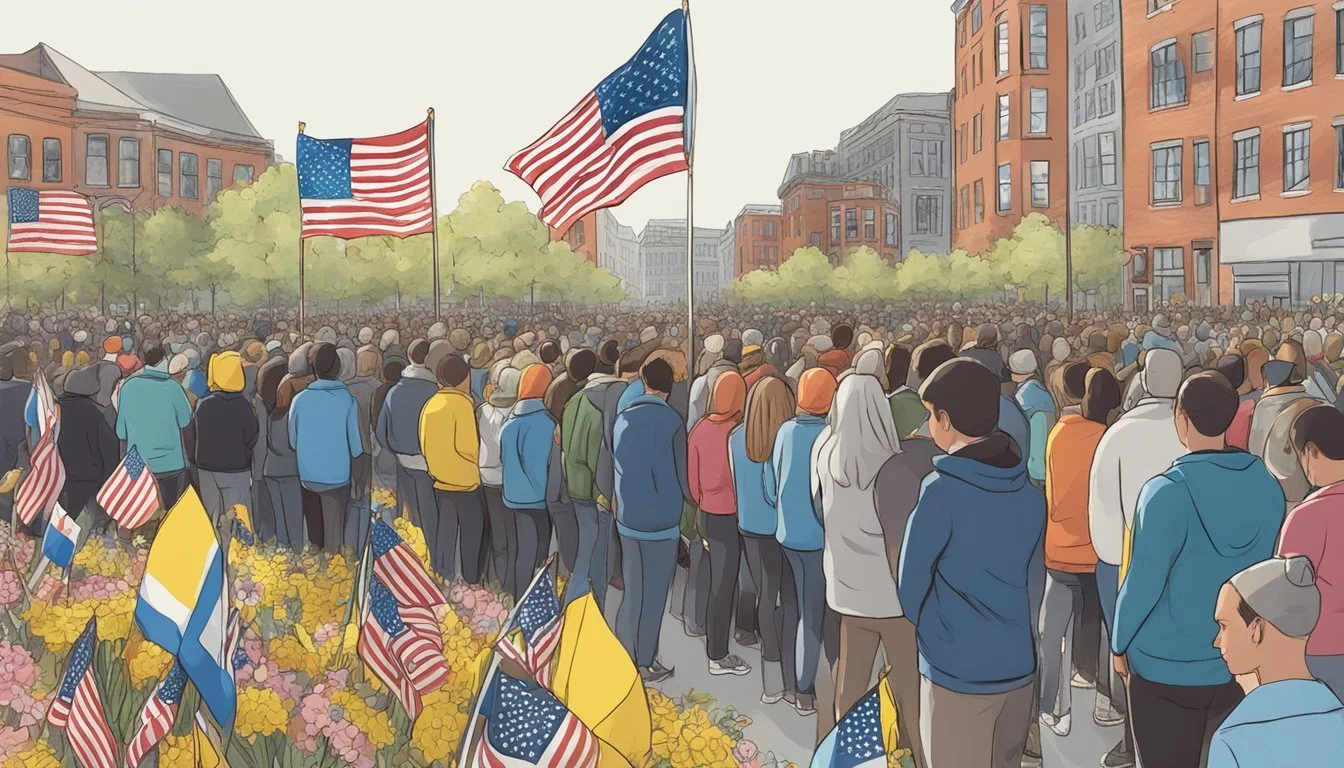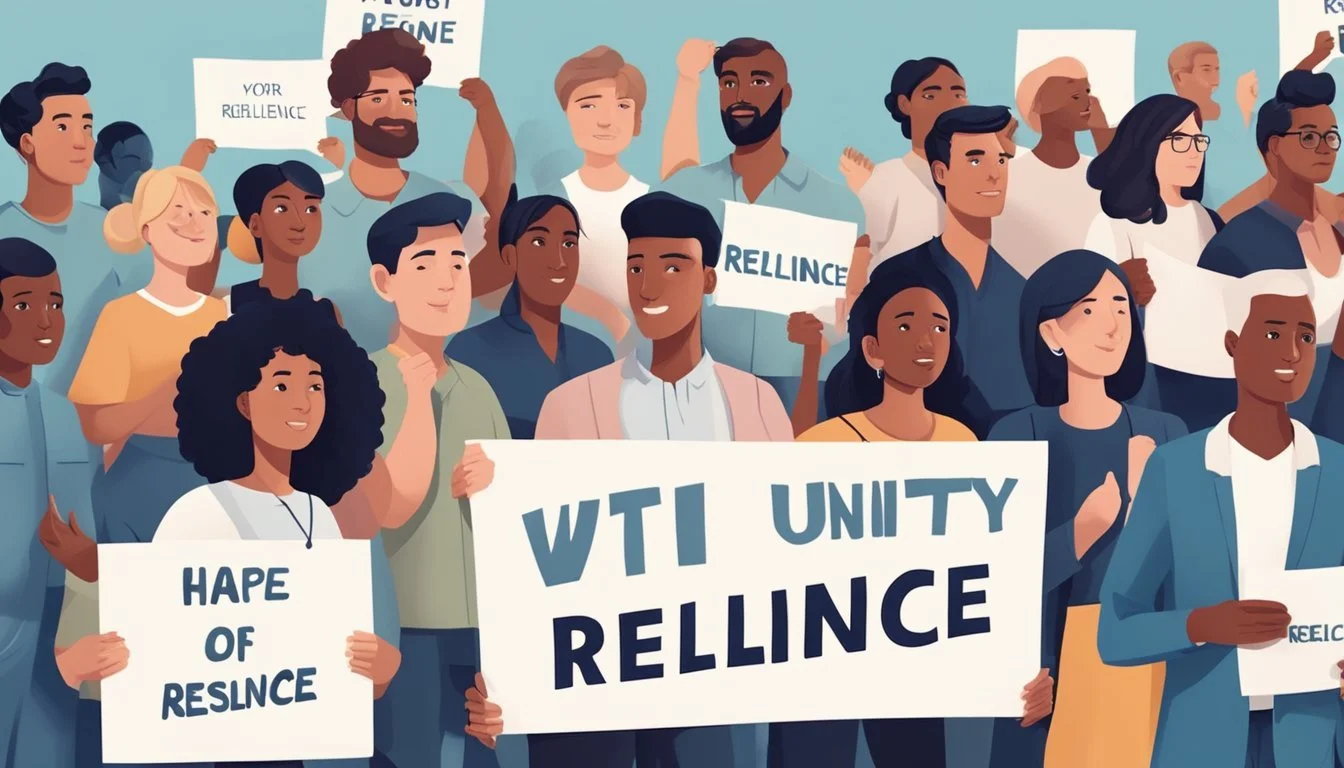Boston Strong: The Real Heroes of 'Patriots Day'
Honoring First Responders and Survivors
The 2016 film "Patriots Day" brought the harrowing events of the 2013 Boston Marathon bombings to the big screen. While the movie dramatized certain aspects for cinematic effect, it aimed to honor the real-life heroes who emerged during this tragic incident.
The true heroes of the Boston Marathon bombings were the first responders, law enforcement officers, and ordinary citizens who displayed extraordinary courage in the face of terror. These individuals, embodying the spirit of "Boston Strong," risked their lives to save others and bring the perpetrators to justice.
Unlike the fictional character Tommy Saunders portrayed by Mark Wahlberg, the film showcases several real-life figures who played crucial roles in the aftermath of the attack. From police officers to medical professionals, these unsung heroes demonstrated the resilience and unity that defined Boston's response to this act of terrorism.
The History and Significance of Patriots Day
Patriots Day commemorates the first battles of the American Revolutionary War. It originated to honor the events of April 19, 1775, when colonial militias clashed with British troops in Lexington and Concord, Massachusetts.
The holiday is observed on the third Monday in April in Massachusetts and Maine. It celebrates the courage and sacrifice of those who fought for American independence.
Patriots Day features reenactments, parades, and ceremonies at historic sites. These events help keep the revolutionary spirit alive and educate people about this pivotal moment in American history.
The Boston Marathon, first run in 1897, is now a major part of Patriots Day celebrations. This prestigious race attracts runners from around the world and brings the community together.
Patriots Day serves as a reminder of the values that shaped the United States. It honors those who stood up for liberty and self-governance, principles that continue to resonate today.
The holiday connects past and present, allowing people to reflect on the nation's origins. It fosters a sense of civic pride and unity among residents of Massachusetts and beyond.
Overview of 'Patriots Day' Film
'Patriots Day' is a 2016 action thriller that dramatizes the events of the 2013 Boston Marathon bombing and the subsequent manhunt. The film features a star-studded cast and aims to honor the real-life heroes involved in the incident.
Plot Synopsis
'Patriots Day' recreates the tragedy that unfolded on April 15, 2013, during the Boston Marathon. The film depicts the bombing that killed three people and injured hundreds. It then follows the intense city-wide search for the terrorists responsible. The narrative focuses on the efforts of law enforcement and first responders in the aftermath of the attack. It showcases the resilience of the Boston community and the coordination between various agencies to bring the perpetrators to justice.
The story culminates in a dramatic manhunt that gripped the city for several days. The film portrays the tension and urgency of the search, leading to the eventual capture of the suspects.
Cast and Characters
'Patriots Day' boasts an ensemble cast of acclaimed actors:
Mark Wahlberg stars as Tommy Saunders, a composite character representing Boston police officers
John Goodman portrays Commissioner Ed Davis
Kevin Bacon plays FBI Special Agent Richard DesLauriers
J.K. Simmons takes on the role of Sergeant Jeffrey Pugliese
Michelle Monaghan appears as Carol Saunders, Tommy's wife
The actors bring depth to their roles, embodying the determination and bravery of those involved in the real-life events. Wahlberg's character serves as the audience's guide through the unfolding crisis.
Production Details
Peter Berg directed 'Patriots Day', collaborating with Mark Wahlberg for the third time. The film was produced by Lionsgate and CBS Films. Berg, along with Matt Cook and Joshua Zetumer, wrote the screenplay based on the book "Boston Strong" by Casey Sherman and Dave Wedge.
The production team aimed for authenticity, filming on location in Boston and consulting with real-life individuals involved in the events. The movie premiered at the AFI Fest in November 2016 before its wider release in January 2017.
'Patriots Day' received praise for its tense pacing and respectful portrayal of the tragedy. Critics noted the film's effort to balance thriller elements with a tribute to Boston's resilience.
Real-Life Events Vs. Film Adaptation
The 2013 Boston Marathon bombing and its aftermath were dramatic events that captured national attention. The film "Patriots Day" aimed to depict these events, balancing factual accuracy with cinematic storytelling.
Boston Marathon Bombing
On April 15, 2013, two explosions rocked the Boston Marathon finish line on Boylston Street. The blasts killed three people and injured hundreds more.
The film accurately portrays the chaos and heroism that unfolded in the bombing's immediate aftermath. First responders and civilians rushed to aid the injured, creating makeshift tourniquets and carrying victims to safety.
Law enforcement quickly secured the area and began collecting evidence. The movie captures the initial confusion and the rapid mobilization of local and federal agencies.
The Tsarnaev Brothers
Brothers Dzhokhar and Tamerlan Tsarnaev were identified as the bombing suspects. The film portrays their backgrounds and motivations, though some details were dramatized for narrative effect.
Tamerlan, the older brother, is shown as the dominant figure and primary instigator. This aligns with investigators' findings.
The movie depicts the brothers' movements after the bombing, including their attempt to flee Boston. While some scenes were recreated based on evidence, others required speculation due to gaps in the known timeline.
FBI and Boston Police Investigation
The investigation involved unprecedented cooperation between local and federal agencies. The film highlights key figures like Boston Police Commissioner Ed Davis and FBI Agent Richard DesLauriers.
"Patriots Day" accurately portrays the use of surveillance footage to identify the suspects. It shows investigators painstakingly reviewing hours of video from multiple sources.
The movie also depicts the controversial decision to release the suspects' images to the public. This move proved crucial in advancing the investigation but also precipitated further violence.
Manhunt
The manhunt for the Tsarnaev brothers lasted several days. The film condenses this timeline but captures major events.
It accurately portrays the shootout in Watertown and the killing of MIT Police Officer Sean Collier. The heroic actions of Watertown Police, particularly Sgt. Jeffrey Pugliese, are highlighted.
The carjacking of Dun Meng is depicted, though some details were altered for dramatic effect. The final capture of Dzhokhar Tsarnaev in a boat is largely faithful to accounts, showcasing the tension of those final hours.
The Heroes Of The Boston Marathon Bombings
The Boston Marathon bombings brought forth extraordinary acts of heroism and resilience from individuals and the community. First responders, medical professionals, and ordinary citizens stepped up in the face of tragedy to save lives and support those affected.
First Responders and Medical Staff
Police officers, firefighters, and paramedics rushed to the scene within minutes of the explosions. They provided immediate aid to the injured and helped evacuate the area. Boston Police Officer Dic Donohue was critically wounded during the manhunt for the bombers but survived thanks to quick medical intervention.
Medical staff at nearby hospitals worked tirelessly to treat hundreds of injured victims. Doctors and nurses performed life-saving surgeries and provided crucial care in the aftermath. Their swift and coordinated response saved numerous lives and limbs.
The Role of the Community
Bostonians opened their homes to stranded runners and visitors. Local restaurants provided free meals to first responders and victims' families. Blood drives saw record numbers of donors eager to help.
Volunteers assisted in various capacities, from organizing fundraisers to offering counseling services. The phrase "Boston Strong" emerged as a rallying cry, symbolizing the city's unity and determination to overcome adversity.
Tributes and Memorials
Survivors like Jessica Kensky and Patrick Downes became symbols of resilience, sharing their stories of recovery and hope. David Ortiz, beloved Red Sox player, delivered an emotional speech that captured the city's spirit.
Memorial services honored the victims and celebrated the community's strength. The Boston Marathon Memorial was established near the finish line, featuring bronze sculptures and inscriptions commemorating the lives lost and forever changed.
Annual events and charity runs continue to pay tribute to the victims and heroes of that day. These memorials serve as enduring reminders of the city's courage and compassion in the face of tragedy.
Cinematic Elements and Techniques
"Patriots Day" employs specific filmmaking techniques to create an authentic portrayal of the Boston Marathon bombing and its aftermath. The movie's visual style and attention to detail immerse viewers in the events and setting.
Handheld Camerawork
The film extensively uses handheld camera techniques to create a sense of urgency and realism. This approach gives scenes a raw, documentary-like feel, especially during intense moments like the bombing itself and the subsequent manhunt. The shaky, intimate camerawork puts viewers in the middle of the action, enhancing the tension and emotional impact.
The handheld style also allows for quick, dynamic movements between characters and locations. This fluidity mirrors the chaotic nature of the events unfolding on screen.
Authenticity in Portraying Boston
"Patriots Day" takes great care to accurately depict Boston's unique character and atmosphere. The film showcases recognizable landmarks and neighborhoods, capturing the city's distinct personality.
Attention to detail extends to the characters' accents and mannerisms. The actors work to portray authentic Boston accents, though with varying degrees of success. This effort adds credibility to the performances and helps ground the story in its specific locale.
The movie incorporates real footage from security cameras and news reports, blending seamlessly with dramatized scenes. This mix of genuine and recreated material enhances the film's procedural accuracy and documentary-like quality.
Cultural and Social Impact
The Boston Marathon bombing and its aftermath profoundly shaped public discourse and community spirit. The city's response demonstrated remarkable resilience and unity in the face of tragedy.
Inspiring Stories of Resilience
Survivors like Jeff Bauman and Patrick Downes emerged as symbols of strength. Bauman, who lost both legs, helped identify the bombers and later wrote a memoir. Downes, also an amputee, returned to run the marathon in 2016. Local businesses rallied to support victims and first responders, offering free services and donations.
The phrase "Boston Strong" became a rallying cry, appearing on T-shirts, banners, and social media. It embodied the city's determination to overcome adversity and support those affected by the attack.
Influence on Public Perception of Terrorism
The bombing heightened awareness of domestic terrorism threats. Media coverage, including a "60 Minutes" episode, brought the realities of such attacks to the forefront of public consciousness. The swift response of law enforcement and the community's resilience challenged the notion that terrorism could easily disrupt American life.
The incident sparked debates on security measures at public events and the balance between safety and personal freedom. It also led to increased scrutiny of online radicalization, as the Tsarnaev brothers' motivations were explored.
Behind the Scenes
The making of "Patriots Day" involved extensive research and collaboration to accurately portray the events of the Boston Marathon bombing. Real-life survivors and first responders contributed their experiences to ensure authenticity.
Casey Sherman and Dave Wedge Collaboration
Casey Sherman and Dave Wedge's book "Boston Strong" served as a key source for the film. The authors conducted in-depth interviews with survivors, law enforcement, and community members. Their work provided a comprehensive account of the bombing and its aftermath.
Sherman and Wedge's research helped screenwriters craft a narrative that balanced factual accuracy with dramatic storytelling. The authors' insights into the emotional impact of the events on Bostonians proved invaluable for character development.
Recreating the Marathon and Bombings
Filming the marathon scenes required meticulous planning. Producers worked closely with city officials to coordinate street closures and crowd management. Hundreds of extras were recruited to recreate the atmosphere of the race.
Special effects teams faced the challenge of depicting the explosions realistically while ensuring safety on set. They used a combination of practical effects and CGI to achieve a convincing result.
The production team consulted with marathon organizers to accurately represent the event's logistics. They paid careful attention to details such as runner bibs, volunteer uniforms, and course layout.

